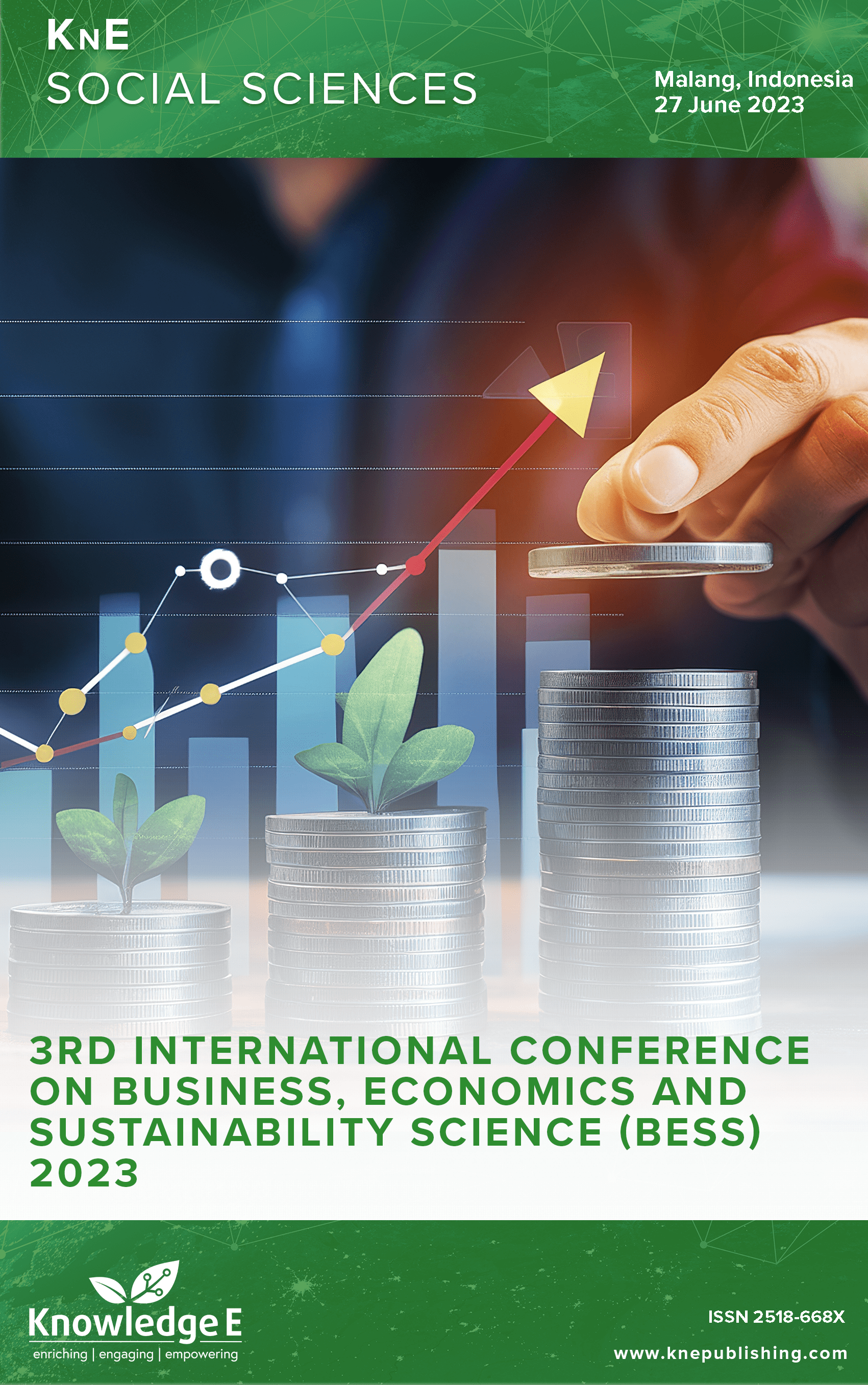Progress of Tourism Development in East Kalimantan Province, Indonesia: A Path to Realize the Sustainable Economic Sector
DOI:
https://doi.org/10.18502/kss.v9i21.16682Abstract
The tourism sector in East Kalimantan Province is expected to contribute to the region’s economy over the domination of the mining industry. On the other hand, the main issue is that the province’s economy still relies much upon the mining-based sector, particularly coal. As green growth-based and sustainable development strategies have been embraced globally for future development, developing a tourism-based economy is associated with this implementation due to tropical and mangrove forest area resources owned by the province. This path, if consistently developed, means not only an improved proportion of non-mining sectors in total local GDP but also significant reductions of carbon emissions responsible for global warming and climate change. Less elaborated studies have discussed the case of tourism development for the case of coal-based at province level. This paper tries to contribute to the gap by descriptively summarizing the current conditions of the tourism destinations and their climate development in the region using SWOT analysis. Our study shows that East Kalimantan Province has a comparative advantage in natural tourism with ecotourism destinations. Mangrove forest attractions, for instance, recorded as many as 18 objects and if these objects are properly conserved, they may contribute to reducing the harmful effects led by greenhouse gases. Other tourist objects with nature backgrounds have also reached 124 in number, and there was one object recognized in the Indonesian Tourism Village Award. An increase in non-domestic tourist visits from 2013 to 2019 was also seen, though the number was less developed compared to national tourists, and it experienced a significant decrease due to the Covid-19 pandemic. Some limitations such as accessibility and amenities, human resource, branding, and marketing of tourist destinations hamper the development of the tourism sector and should be addressed to optimize its competitiveness. Policies that cut these burdens may improve the realization of sustainability in East Kalimantan’s Province economy.
Keywords: tourism, development, tourist destinations, ecotourism, East Kalimantan
References
Acemoglu D. Introduction to economic growth. J Econ Theory. 2012;147(2):545–50. DOI: https://doi.org/10.1016/j.jet.2012.01.023
Chin CH, Lo MC, Songan P, Nair V. Rural Tourism Destination Competitiveness: A Study on Annah Rais Longhouse Homestay, Sarawak. Procedia Soc Behav Sci. 2014;144:35–44. DOI: https://doi.org/10.1016/j.sbspro.2014.07.271
Cook S. Structural Change, Growth and Poverty Reduction in Asia: Pathways to Inclusive Development. Dev Policy Rev. 2006;24 s1:s51–80. DOI: https://doi.org/10.1111/j.1467-7679.2006.00341.x
Crouch GI. Destination competitiveness: an analysis of determinant attributes. J Travel Res. 2011;50(1):27–45. DOI: https://doi.org/10.1177/0047287510362776
Darmawan E, Arfa M, Purbawati DL. The development of nature based-tourism in Tembarak District, Temanggung Regency. Asia Pac J Tour Res. 2018;23(9):924–34. DOI: https://doi.org/10.1080/10941665.2018.1510423
Dwyer L, Kim C. Destination competitiveness: determinants and indicators. Curr Issues Tour. 2003;6(5):369–414. DOI: https://doi.org/10.1080/13683500308667962
Fouquet R. (2019). Introduction to the Handbook on Green Growth. In R. Fouquet, Handbook on Green Growth (pp. 1–19). Edward Elgar Publishing. https://doi.org/10.4337/9781788110686.00005. DOI: https://doi.org/10.4337/9781788110686.00005
Goffi G, Cucculelli M, Masiero L. Fostering tourism destination competitiveness in developing countries: the role of sustainability. J Clean Prod. 2019;209:101–15. DOI: https://doi.org/10.1016/j.jclepro.2018.10.208
Kachniewska MA. Tourism development as a determinant of quality of life in rural areas. Worldw Hosp Tour Themes. 2015;7(5):500–15. DOI: https://doi.org/10.1108/WHATT-06-2015-0028
Litavniece L, Silicka I, Garanti Z, Berjozkina G, Kolongou S. Under-tourism regions and destinations: what are their opportunities to succeed? Worldw Hosp Tour Themes. 2021;13(6):763–72. DOI: https://doi.org/10.1108/WHATT-07-2021-0097
Mensah I, Balasubramanian K, Jamaluddin MR, Alcoriza G, Gaffar V, Rasoolimanesh SM, editors. Marketing Tourist Destinations in Emerging Economies: Towards Competitive and Sustainable Emerging Tourist Destinations. Springer International Publishing; 2022. https://doi.org/10.1007/978-3-030-83711-2. DOI: https://doi.org/10.1007/978-3-030-83711-2
Michael N, Reisinger Y, Hayes JP. The UAE’s tourism competitiveness: A business perspective. Tour Manag Perspect. 2019;30:53–64. DOI: https://doi.org/10.1016/j.tmp.2019.02.002
Nadalipour Z, Imani Khoshkhoo MH, Eftekhari AR. An integrated model of destination sustainable competitiveness. Compet Rev. 2019;29(4):314–35. DOI: https://doi.org/10.1108/CR-12-2017-0086
Ngepah N. A review of theories and evidence of inclusive growth: an economic perspective for Africa. Curr Opin Environ Sustain. 2017;24:52–7. DOI: https://doi.org/10.1016/j.cosust.2017.01.008
Padin C. A sustainable tourism planning model: components and relationships. Eur Bus Rev. 2012;24(6):510–8. DOI: https://doi.org/10.1108/09555341211270528
Park DB, Yoon YS. Developing sustainable rural tourism evaluation indicators. Int J Tour Res. 2011;13(5):401–15. DOI: https://doi.org/10.1002/jtr.804
Priatmoko S, Kabil M, Purwoko Y, Dávid LD. Rethinking Sustainable Community- Based Tourism: A Villager’s Point of View and Case Study in Pampang Village, Indonesia. Sustainability (Basel). 2021;13(6):3245. DOI: https://doi.org/10.3390/su13063245
Richie JR, Crouch GI. The competitive destination: A sustainable tourism perspective. CABI; 2003. https://doi.org/10.1079/9780851996646.0000. DOI: https://doi.org/10.1079/9780851996646.0000
Roman M, Roman M, Prus P, Szczepanek M. Tourism Competitiveness of Rural Areas: evidence from a Region in Poland. Agriculture. 2020;10(11):569. DOI: https://doi.org/10.3390/agriculture10110569
Salinas Fernández JA, Serdeira Azevedo P, Martín Martín JM, Rodríguez Martín JA. Determinants of tourism destination competitiveness in the countries most visited by international tourists: proposal of a synthetic index. Tour Manag Perspect. 2020;33:100582. DOI: https://doi.org/10.1016/j.tmp.2019.100582
Thomas CG. Research methodology and scientific writing. Springer International Publishing; 2021. https://doi.org/10.1007/978-3-030-64865-7. DOI: https://doi.org/10.1007/978-3-030-64865-7
Topolansky Barbe F, Gonzalez Triay M, Häufele C. The competitiveness of the Uruguayan rural tourism sector and its potential to attract German tourists. Compet Rev. 2016a;26(2):166–87. DOI: https://doi.org/10.1108/CR-06-2015-0050

